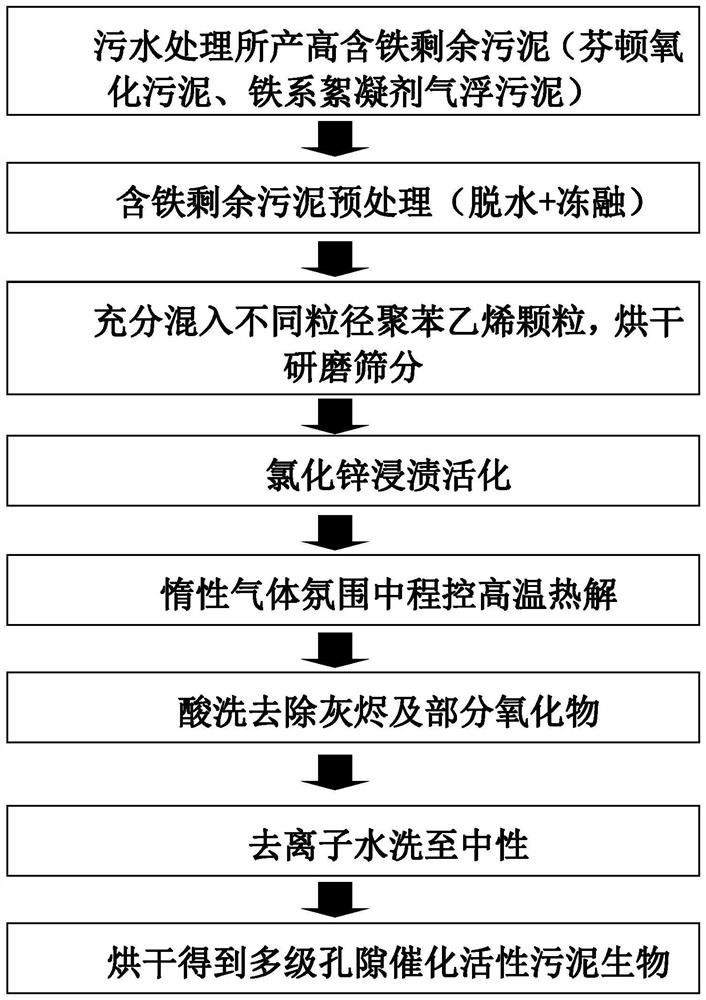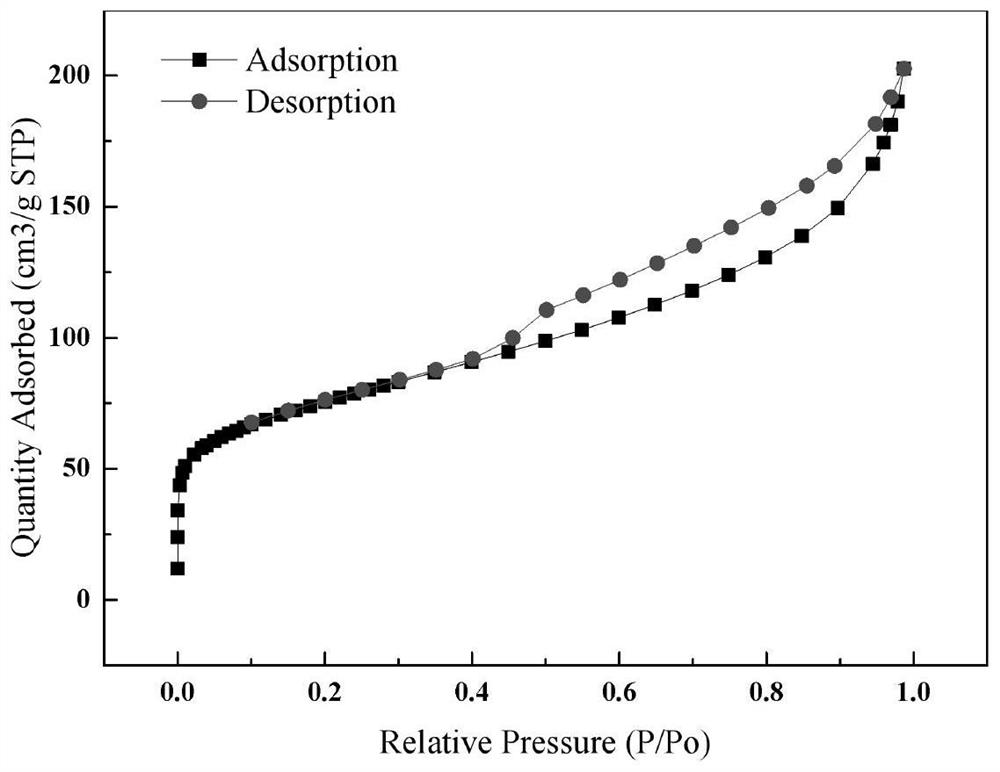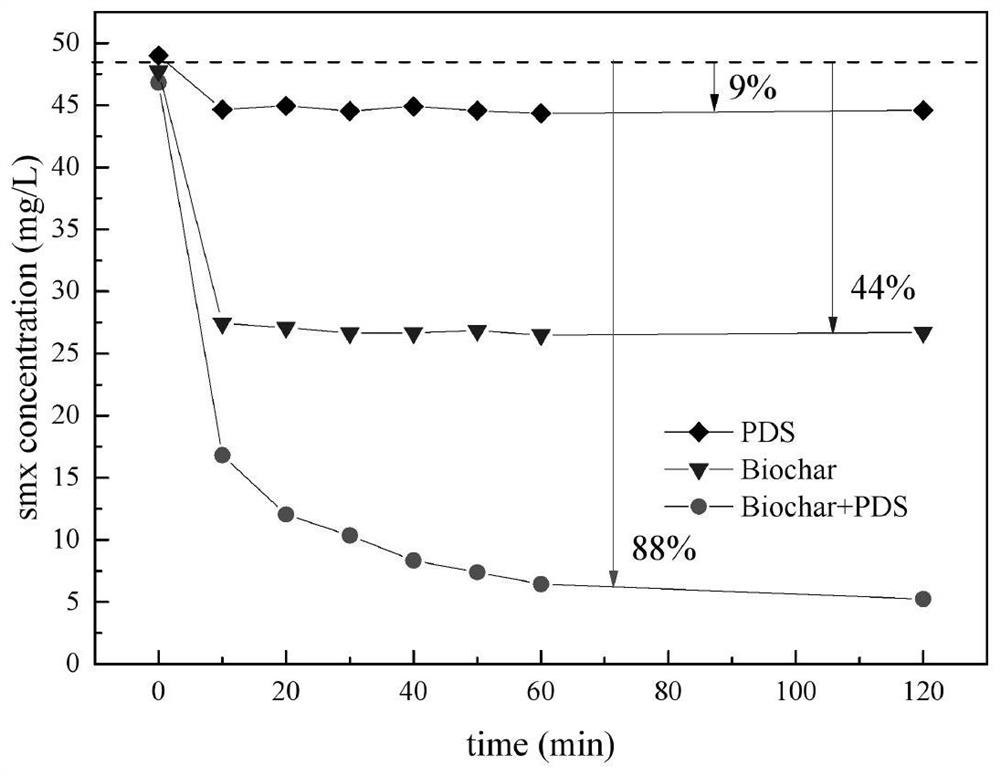Method for preparing catalytic activity biochar from iron-containing excess sludge and removing antibiotics
A technology of excess sludge and catalytic activity, applied in chemical instruments and methods, catalyst regeneration/reactivation, alkali metal compounds, etc., can solve the problems of complex preparation, high cost, unsatisfactory application effect, etc. The effect of void structure, high specific surface area and good adsorption effect
- Summary
- Abstract
- Description
- Claims
- Application Information
AI Technical Summary
Problems solved by technology
Method used
Image
Examples
Embodiment 1
[0046] refer to figure 1 , biochar with catalytic activity was prepared by pyrolysis of dehydrated iron-containing excess sludge by the following steps:
[0047] (1) After dehydrating the iron-containing excess sludge in Fenton's sewage treatment process, freeze it for 18 hours at minus 20°C, and then thaw it naturally for 6 hours;
[0048] (2) crushing polystyrene plastic foam with an ultrafine crusher to obtain polystyrene plastic foam particles with a particle size of about 100 microns;
[0049] (3) Fully mix the sieved iron-containing excess sludge with polystyrene foam particles, then place in an oven to dry at 105°C for 4 hours, and pass through a 50-mesh sieve after crushing;
[0050] (4) impregnating and activating the dried mixture with a 3mol / L zinc chloride solution for 24 hours to obtain a biochar preparation precursor mixed with iron-containing residual sludge and polystyrene particles;
[0051] (5) The obtained biochar preparation precursor was heated up to 800...
Embodiment 2
[0055] Use the biological charcoal that embodiment 1 makes to activate peroxodisulfate to degrade sulfamethoxazole, and its steps are as follows:
[0056] (1) Prepare 50 mg / L sulfamethoxazole solution. Since sulfamethoxazole is extremely difficult to dissolve in water, when preparing the solution, first ultrasonicate it in a small amount of deionized water for 5 minutes, then transfer it to a volumetric flask, and then magnetically Stirrer, at the speed of 800rpm / min, stir for 10h to ensure that it is fully dissolved;
[0057] (2) Get the prepared concentration and add 100 mg of potassium peroxodisulfate and 50 mg of biochar into 100 ml of 50 mg / L sulfamethoxazole solution;
[0058] (3) Stir the reaction at a rotating speed of 200rpm / min, take samples every 10min, and utilize high-performance liquid chromatography to quantitatively analyze the content of SMX within 24h.
[0059] The result of high-performance liquid chromatography detection is: the degradation rate of sulfame...
PUM
| Property | Measurement | Unit |
|---|---|---|
| particle diameter | aaaaa | aaaaa |
| particle diameter | aaaaa | aaaaa |
| particle size | aaaaa | aaaaa |
Abstract
Description
Claims
Application Information
 Login to View More
Login to View More - R&D
- Intellectual Property
- Life Sciences
- Materials
- Tech Scout
- Unparalleled Data Quality
- Higher Quality Content
- 60% Fewer Hallucinations
Browse by: Latest US Patents, China's latest patents, Technical Efficacy Thesaurus, Application Domain, Technology Topic, Popular Technical Reports.
© 2025 PatSnap. All rights reserved.Legal|Privacy policy|Modern Slavery Act Transparency Statement|Sitemap|About US| Contact US: help@patsnap.com



